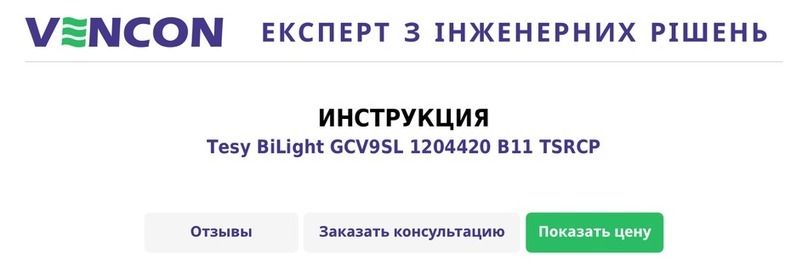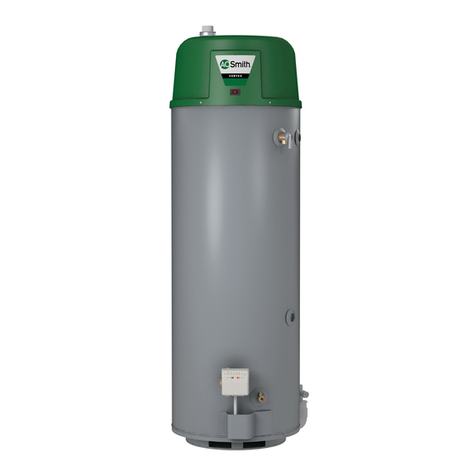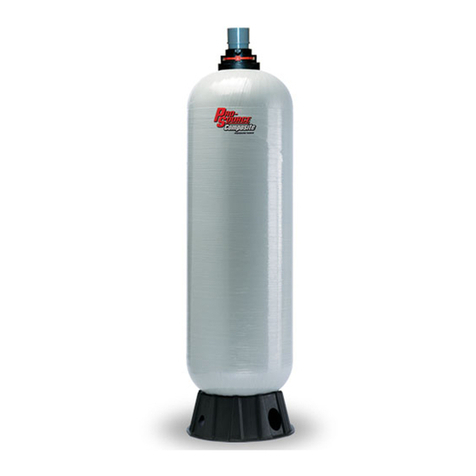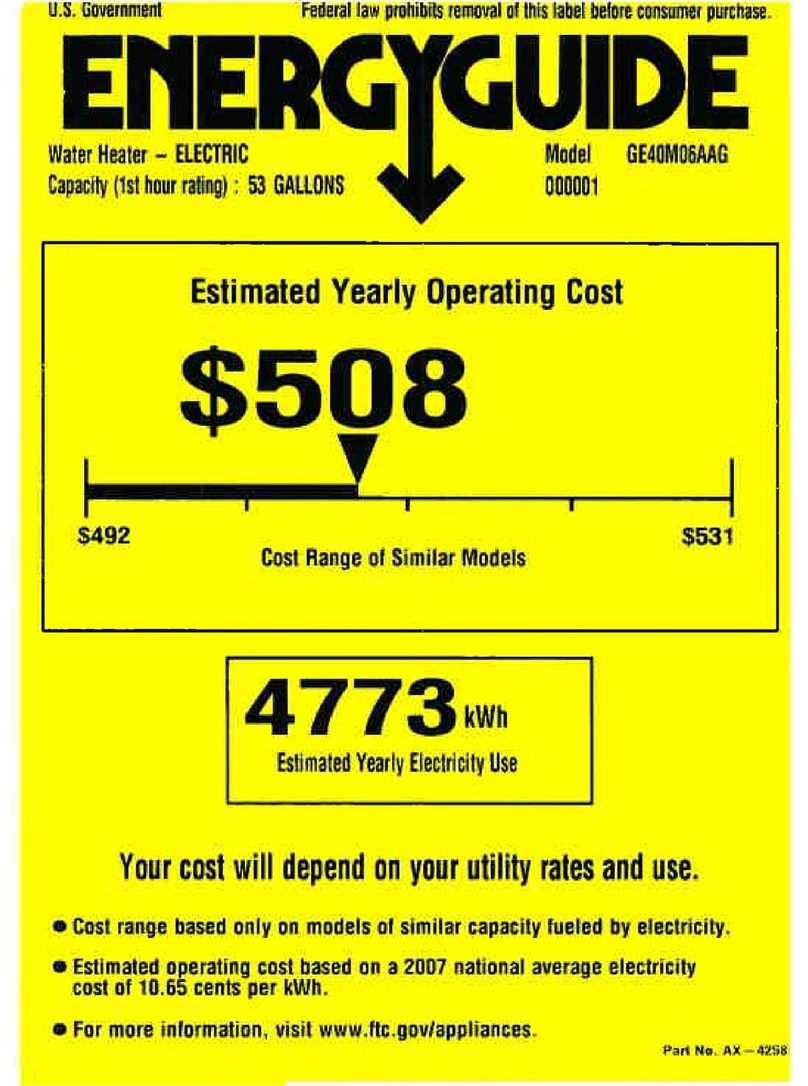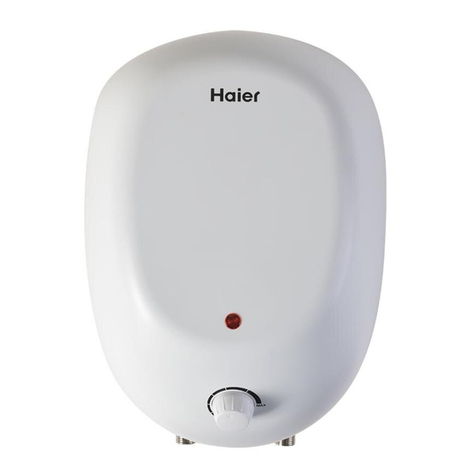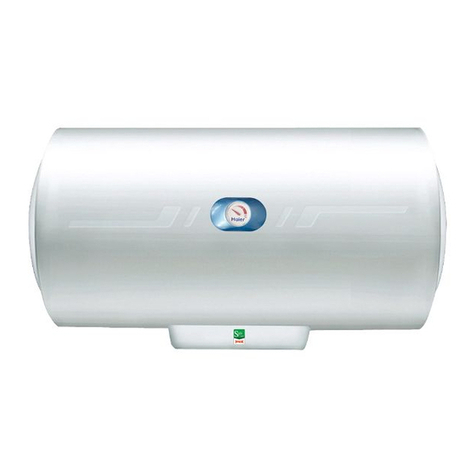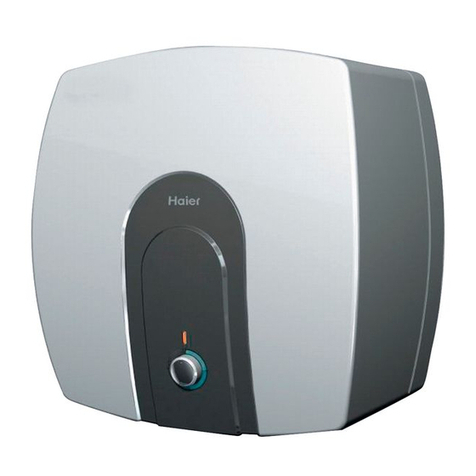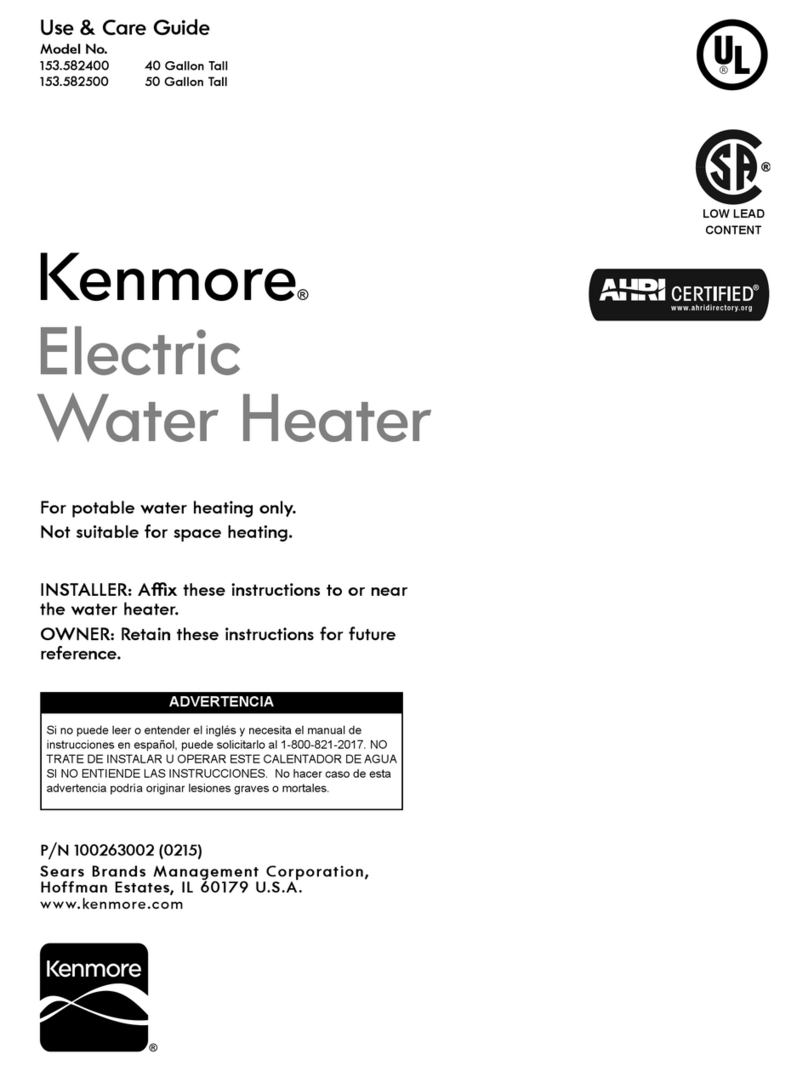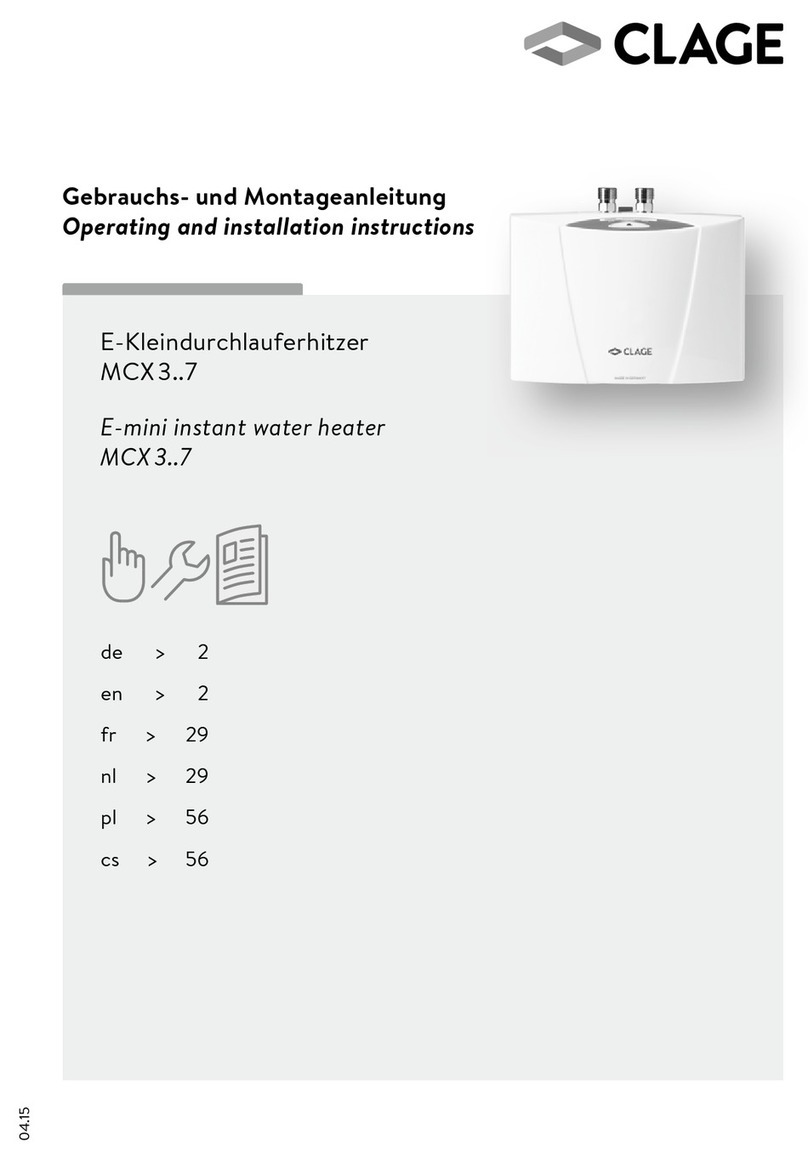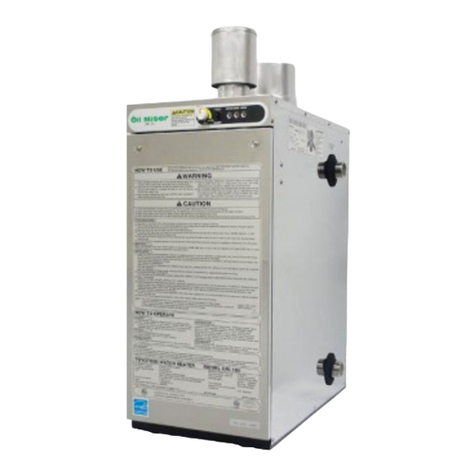
Electric,
Water Circulation Heater
Installation/Operation/Maintenance Form MI511
Applies to Heater Model EPW
1.0 INITIAL INSPECTION
1.1 Upon receipt from the carrier, inspect the heater
for possible damage in transit. If necessary, immediately
report damage to shipping company.
1.2 Verify that the nameplate voltage, phase, wattage
and catalog number comply with the order.
1.3 The EPW, when configured:
• as a swimming pool heater, has a catalog
number EPWP;
• as a domestic water or dishwasher water
booster heater, has a catalog number EPWD;
• as a hot water furnace for comfort or process
water heating, has a catalog number EPWH.
These units differ in trim package, i.e.auxiliary controls.
For this reason IT IS IMPORTANT THAT THE UNITS
BE USED ONLY FOR THE SPECIFIC APPLICATIONS
AS STATED ABOVE.
2.0 INSTALLATION
2.1 The heater must be installed by qualified
personnel to code requirements.
2.2 Ensure that the electrical power supply is the
same voltage and phase as the heater with sufficient
current capacity.
2.3 The heater must be installed in a horizontal
position with the outlet at the top and the drain at the
bottom.
2.4 The mounting hardware, as provided, is suitable
for either floor or ceiling mounting. Note that each
mounting bracket is to be attached at the top of the
heating housing by two holding bolts (see Fig.1).
Remove the two bolts and install the first mounting
bracket prior to removing the second two bolts to install
the second mounting bracket. If all bolts are removed
at once the tank may shift which will increase installation
time.
2.5 Please refer to Figure 1 for dimensions. Be sure
to provide adequate space to facilitate installation and
maintenance. Leave a minimum of 24" (60cm)
clearance at the control compartment (opposite side
to the inlet). If the unit is to be mounted under a table or
cabinet a minimum of 30" (75cm) from the floor to the
underside of the cabinet is required for piping.
2.6 Allow space at sides for the conduit used for power
supply and for thermostat or optional equipment wiring.
2.7 Please refer to Figure 2 for component location and note
the following:
2.7.1 The circulation pump outlet is connected to the heater
inlet located at the end of the unit opposite to the controls
compartment.
2.7.2 A flow switch (optional) is to ensure that the heater will
not be energized if the flow is interrupted. Installations
requiring a flow switch include:
(a) Swimming pool heating systems where the heater
is positioned above the pool water surface.
(b) Whenever the plumbing allows for the heater to be
isolated by shut off valves on the inlet and outlet.
(c) Systems where the heater vessel is allowed to drain
when flow is interrupted. (Without water the built-in limit will
not perform as intended).
(d) Systems where the temperature control bulb is
located away from the outlet.
If a flow switch is not used, and also for pool heating, it is best
to allow the circulating pump to run continuously.
2.7.3 Wire both flow switch and control thermostat to contacts
designated "normally open" and "common". "Normally open"
contacts open on temperature rise on thermostat and close
on flow through switch.
2.7.4 A pressure relief valve is a safety feature which is
intended to open when the system malfunctions or is
improperly operated or maintained. Units equipped with a
pressure relief valve should be fitted with piping to direct the
discharge down and away from personnel or equipment.
NEVER INSTALL A SHUT OFF VALVE ON EITHER SIDE
OF A PRESSURE RELIEF VALVE.
7 1/2"
10 3/4"
7 1/2"
15"
1 1/2" DRAIN
4"
16 1/4"
Knockouts 1",
1 1/4", 1 1/2 & 2"
15"
22 1/2"
11 3/4"
29"
1 1/2" INLET
1 1/2" OUTLET
HOLDING BOLTS
FOR BRACKET
Figure 1
DIMENSIONS
